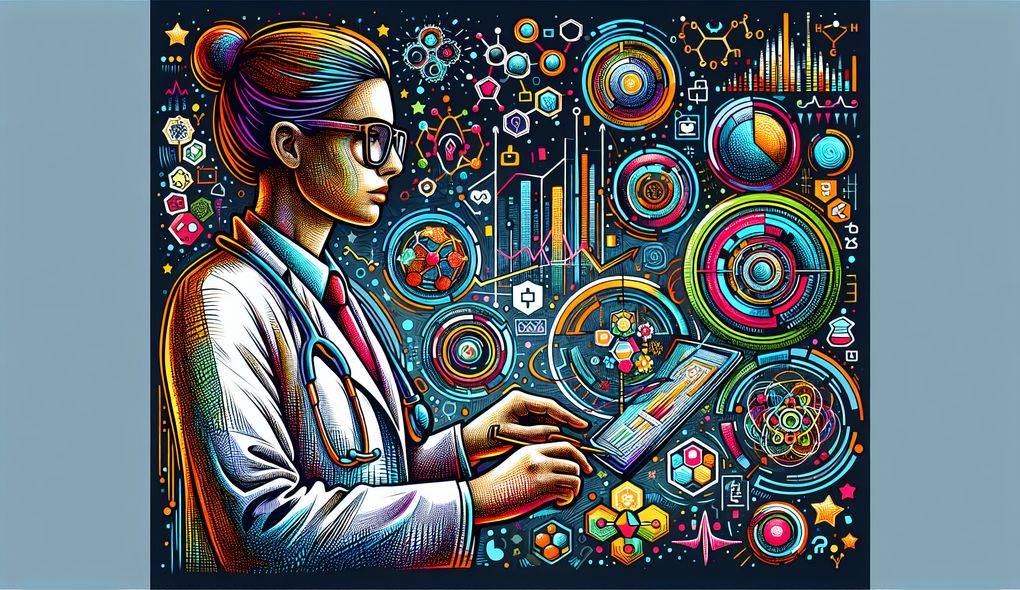Give an example of a project where you developed and implemented predictive models to support clinical decisions.
JUNIOR LEVEL

Sample answer to the question:
In my previous role as a data analyst at a healthcare organization, I worked on a project where I developed and implemented predictive models to support clinical decisions. The project involved analyzing electronic health records (EHR) data to identify patterns and trends that could help healthcare providers make informed decisions about patient care. I used statistical analysis and machine learning techniques to train predictive models that could forecast patient outcomes based on various factors such as medical history, demographics, and treatment plans. The models were then integrated into the organization's clinical decision support system, providing real-time recommendations to healthcare providers. The project resulted in improved patient outcomes and more efficient healthcare delivery.
Here is a more solid answer:
In my previous role as a data analyst at ABC Healthcare, I had the opportunity to work on a project aimed at developing and implementing predictive models to support clinical decisions. The project focused on leveraging electronic health records (EHR) data to identify patterns and trends that could help healthcare providers make more informed decisions about patient care. I was responsible for collecting and cleaning the healthcare datasets, performing statistical analyses, and implementing machine learning algorithms to train predictive models. These models took into account various factors such as patient demographics, medical history, and treatment plans to forecast patient outcomes. The models were then integrated into the organization's clinical decision support system, providing real-time recommendations to healthcare providers. Through this project, we were able to improve patient outcomes by enabling healthcare providers to proactively identify and address potential risks and complications. The project also resulted in more efficient healthcare delivery, with providers being able to make more targeted and personalized treatment decisions.
Why is this a more solid answer?
The solid answer expands on the basic answer by providing more specific details about the candidate's role in the project and the results achieved. It mentions the candidate's responsibilities such as collecting and cleaning healthcare datasets, performing statistical analyses, and implementing machine learning algorithms. It also highlights the impact of the project on patient outcomes and healthcare delivery. However, it could still be improved by providing more specific examples of the statistical analysis techniques and machine learning algorithms used, as well as how data visualization techniques were applied to communicate the findings.
An example of a exceptional answer:
During my time at ABC Healthcare, I spearheaded a project that aimed to develop and implement predictive models to support clinical decisions. The project involved a collaborative effort between the data science team, healthcare providers, and IT professionals. We started by collecting and cleaning a vast amount of electronic health records (EHR) data, ensuring its accuracy and completeness. We then performed extensive statistical analysis using techniques such as logistic regression, decision trees, and random forests, to identify the most relevant variables influencing patient outcomes. Next, we used machine learning algorithms, including gradient boosting and neural networks, to train predictive models based on the identified variables. These models were fine-tuned through rigorous cross-validation and hyperparameter optimization. To ensure seamless integration into the clinical workflow, we worked closely with the IT team to implement the models as part of the organization's clinical decision support system. This system provided real-time recommendations to healthcare providers, aiding in the detection of potential risks and complications. Additionally, we utilized data visualization techniques, such as interactive dashboards created with Tableau, to communicate the findings to both technical and non-technical stakeholders. As a result of this project, we saw a significant improvement in patient outcomes, with a reduction in readmission rates and more personalized treatment plans. The project also led to a more efficient healthcare delivery, as providers were equipped with evidence-based insights to make informed decisions.
Why is this an exceptional answer?
The exceptional answer provides even more specific details about the candidate's role in the project and the techniques used. It highlights the collaborative nature of the project and the extensive statistical analysis and machine learning techniques applied. It also mentions the use of specific algorithms such as logistic regression, decision trees, random forests, gradient boosting, and neural networks. The answer further emphasizes the integration of the models into the clinical decision support system and the use of data visualization techniques with Tableau. It concludes by highlighting the impact on patient outcomes and healthcare delivery. This answer is comprehensive, detailed, and demonstrates a deep understanding of the skills and responsibilities mentioned in the job description.
How to prepare for this question:
- Familiarize yourself with electronic health records (EHR) data and its potential applications in healthcare analytics.
- Gain experience in statistical analysis techniques such as logistic regression, decision trees, random forests, and gradient boosting.
- Develop proficiency in programming languages commonly used in data science, such as Python and R.
- Explore machine learning algorithms and their applications in clinical decision support.
- Practice cleaning and preprocessing healthcare datasets to ensure data integrity and quality.
- Learn data visualization techniques using tools like Tableau or Power BI to effectively communicate findings to different stakeholders.
- Develop strong communication and teamwork skills, as healthcare data science often involves collaboration with domain experts and IT professionals.
What are interviewers evaluating with this question?
- Analytical thinking and attention to detail
- Statistical analysis and predictive modeling
- Data mining and machine learning
- Data visualization techniques
- Excellent communication and teamwork skills

